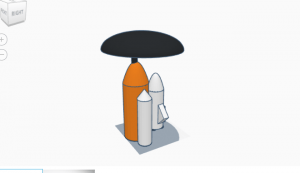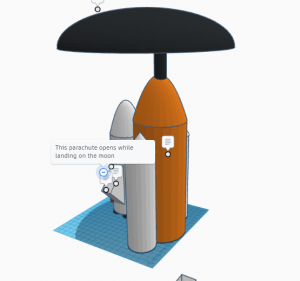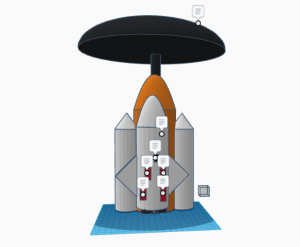Registrations are closed
In the future, to enable astronauts to stay on the Moon for long periods of time, new infrastructures must be developed to overcome important challenges. Such challenges include protection from radiation and meteorites, energy production, the extraction and recycling of water, food production and much more. The Moon Camp Challenge invites students to explore the Moon and decode some of the complexities future astronauts may face.
In Moon Camp Discovery each team’s mission is to 3D design only one component of a Moon Camp using Tinkercad. Teams can choose to design a:
– Lunar lander
– Moon Base
– Lunar rover
– Rocket
– Lunar Orbital Space Station
The design should be adapted to the Moon environment and if possible consider the use of local resources, provide protection and/or living and working facilities for the astronauts.
Moon Camp Discovery is a non-competitive mission for beginners. All teams that submit an entry that complies with the guidelines will receive a participation certificate and their project will be shared on the Moon Camp online platform.
Who can participate?
Participation is open worldwide to students aged up to 19 years old. Moon Camp Discovery is recommended for students aged 6 to 14 years old. Participating students must be supported by a teacher, educator or parent.
Discovery Projects Gallery 2020-2021
Below you can find some of the Moon Camp Discovery projects. For more projects visit the Moon Camp Discovery project gallery.
Team: KABIRO-Ast
Istanbul Turkey Category: Rocket
External link for Tinkercad 3D design
While preparing my design, I gave importance to the functionality of the rocket rather than its appearance. For example, although the umbrella-like part on the rocket does not look very good to the eye, it protects astronauts from the sun and heat until they leave orbit.
1-Parachutes: While my rocket is landing on the Moon or another planet, the four red parachutes behind it make the landing lighter.
2-Fuel Tank: The fuel tank is located in a way that is far from the cockpit and engines in order to prevent astronauts from getting damaged and to get out of the vehicle during an emergency (such as a fire in the fuel tank).
3-Sun Shield: This umbrella-like structure, which I call the sun shield, protects the rocket and astronauts from sunlight and radiation until they reach space.



















